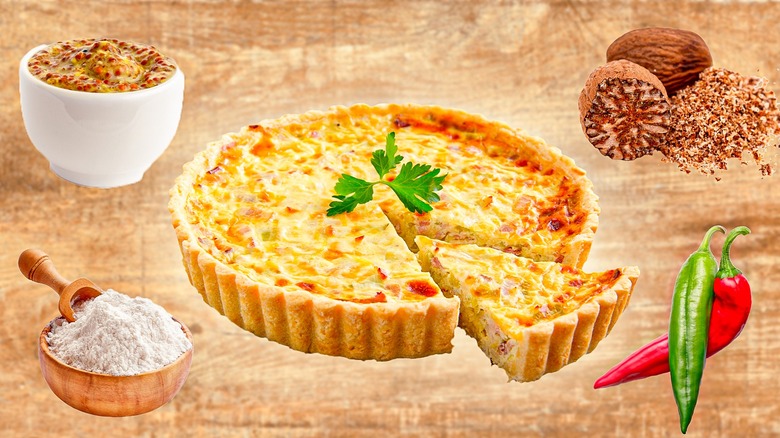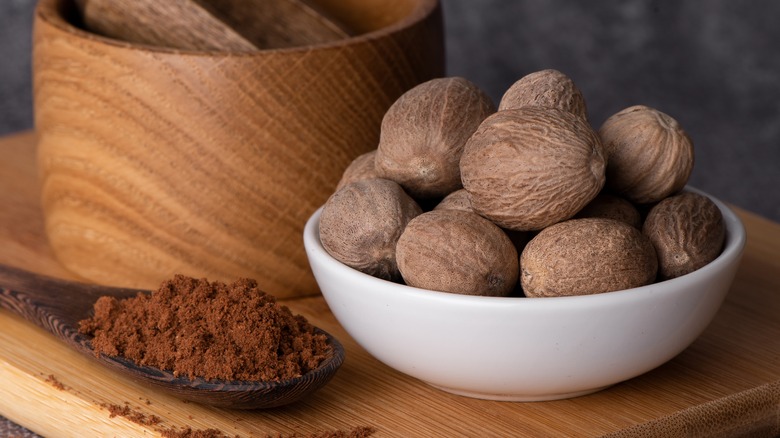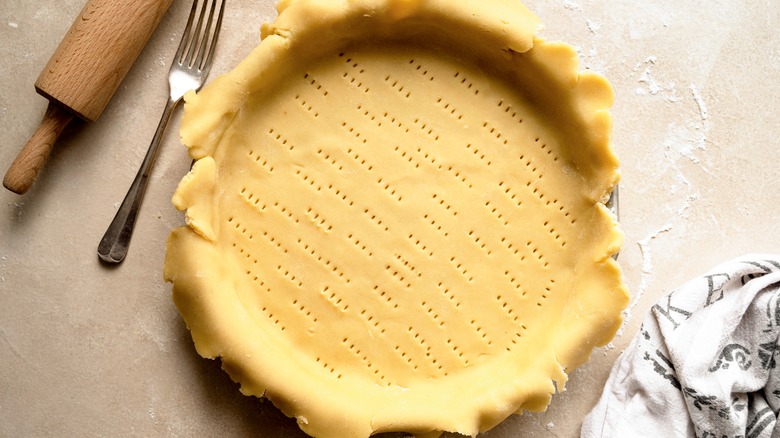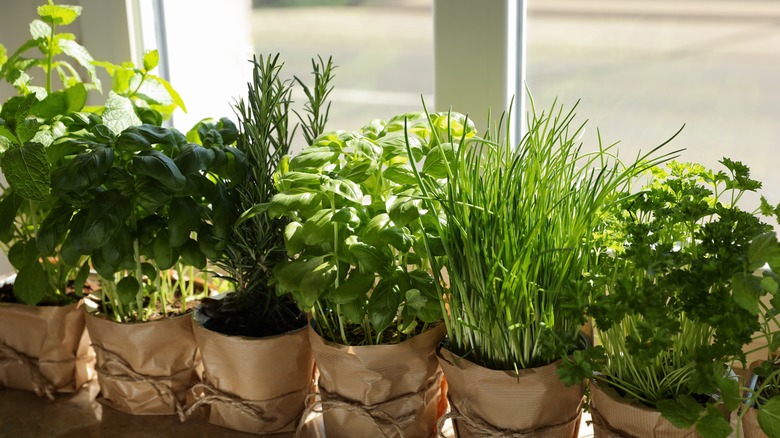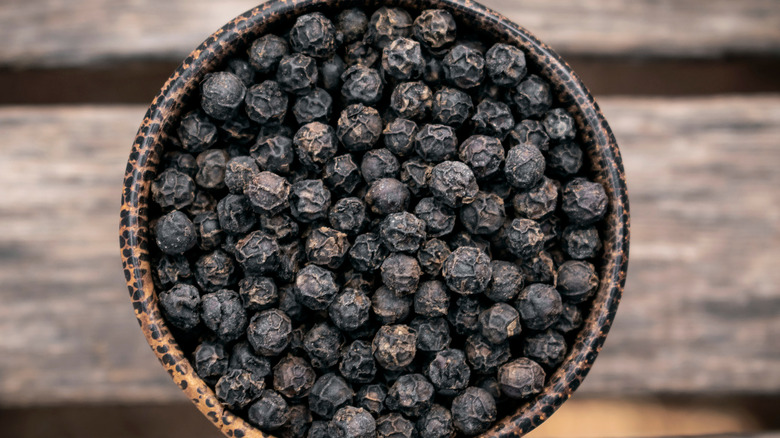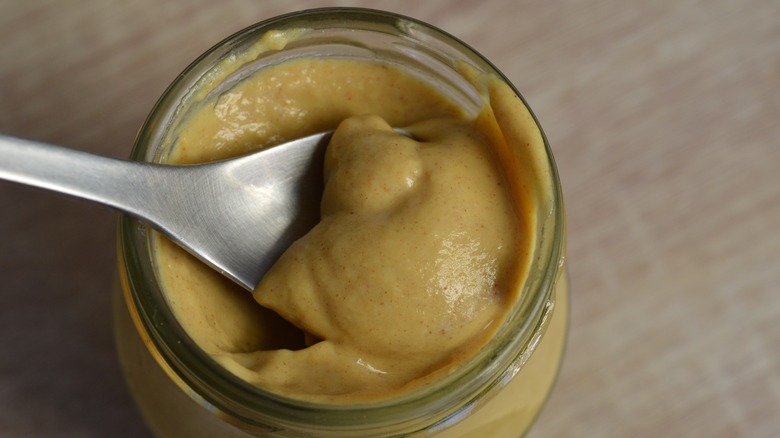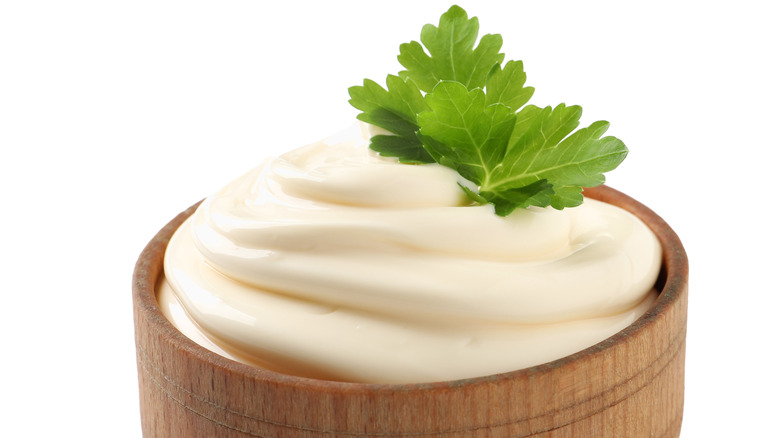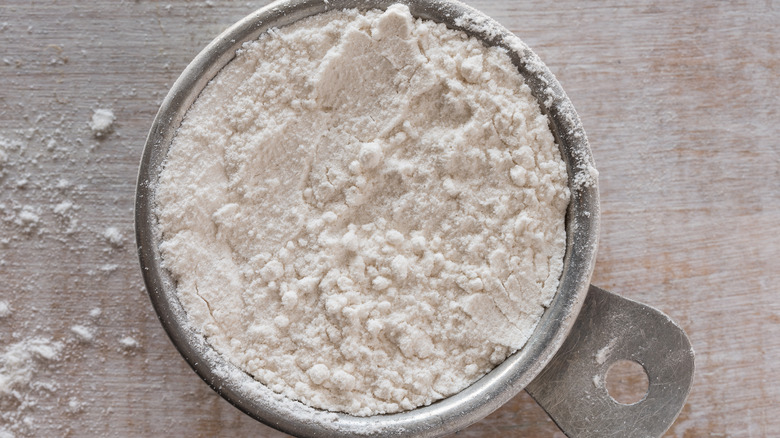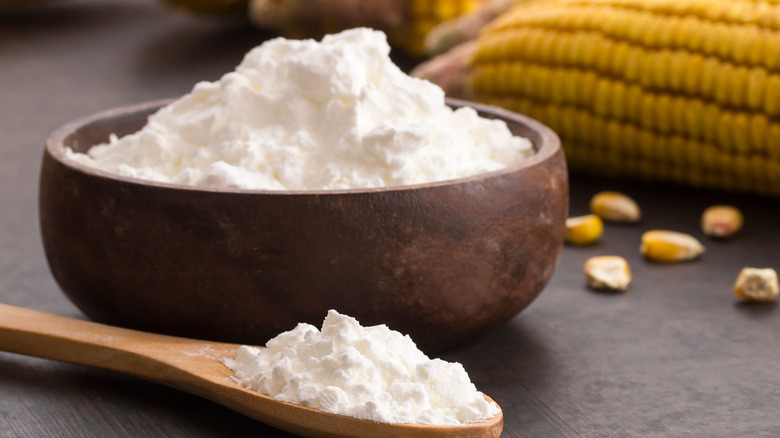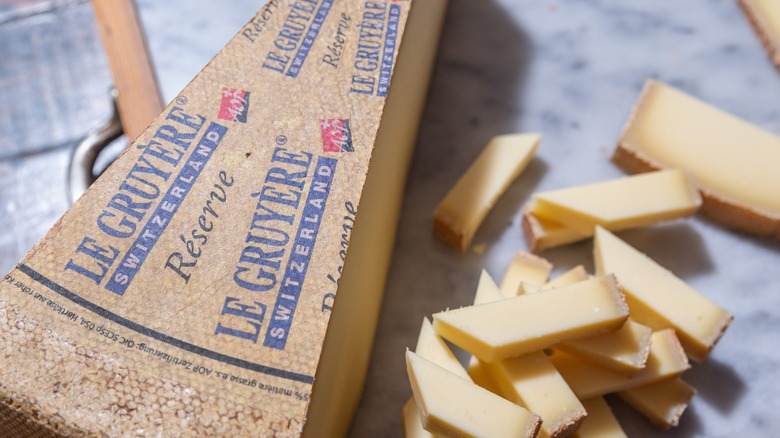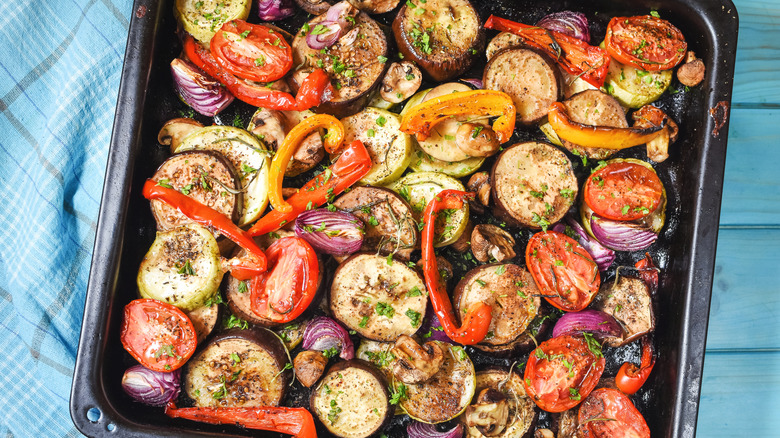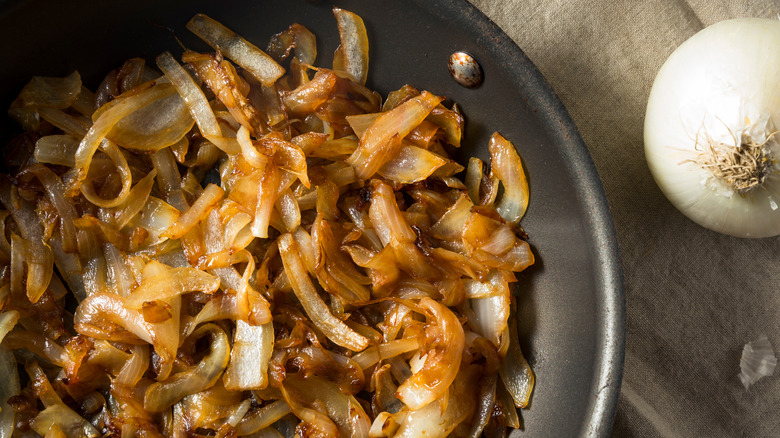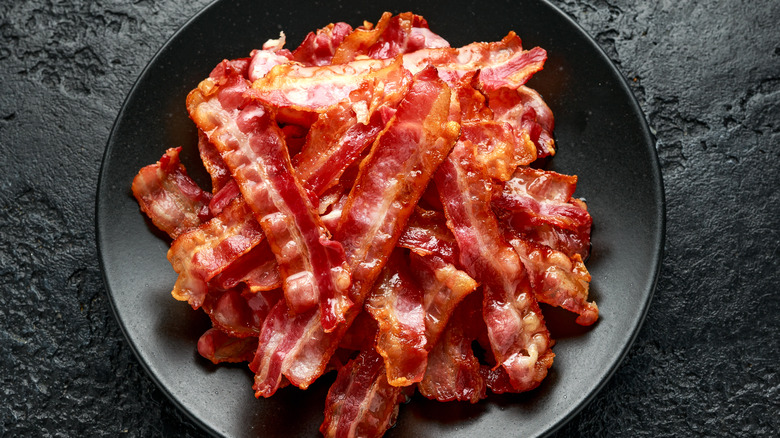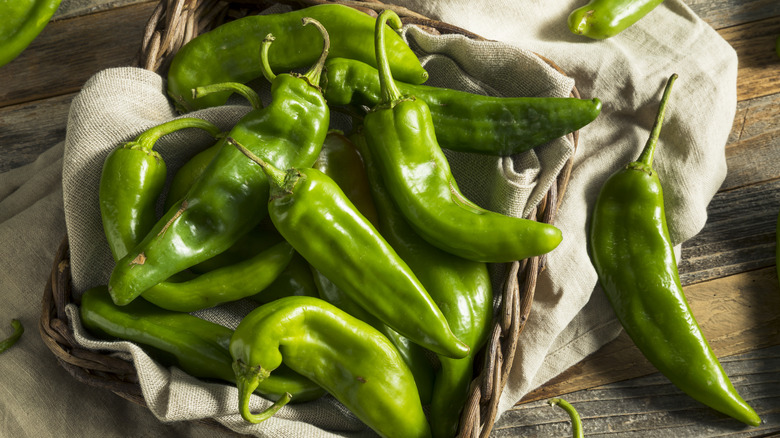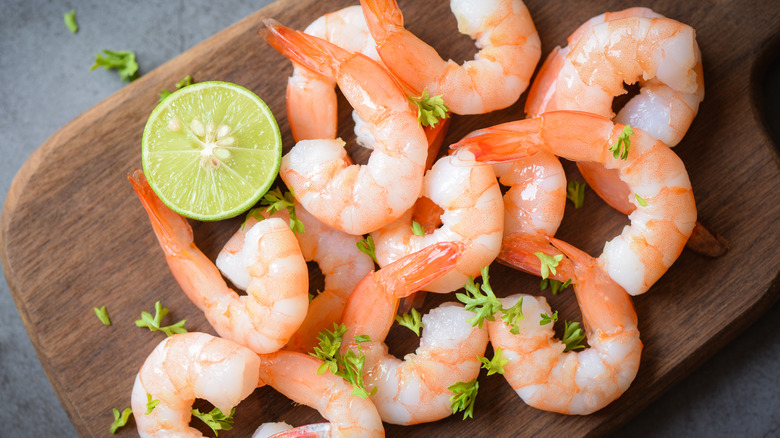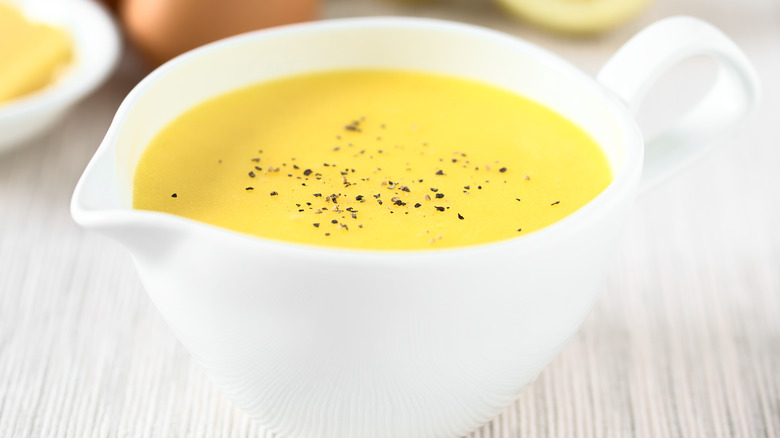15 Ingredient Additions To Elevate Quiche
Easy to make, infinitely customizable, and a perennial crowd pleaser — there isn't much to dislike about quiche. Perhaps the only downside of this eggy dish is that it's easy to get into a rut when making it again and again. While there's nothing wrong with having a go-to recipe to whip out on a busy weeknight, it's worth getting out of your comfort zone once in a while. If you're feeling hesitant, don't worry. Quiche is one of those dishes that's nearly impossible to mess up. The only way you lose is by not experimenting a bit.
In this article, we're covering ingredients you can add to your quiche to bump it up a notch. Some are basic additions that will up the quality of your quiche, while others are unexpected items you probably never thought to add. So, if you're ready to take your quiche from meh to marvelous, make sure to read every tip on this list.
1. Nutmeg
With its starring role in eggnog and snickerdoodles, no one would blame you for thinking nutmeg is mostly a fall or Christmas spice. But adding a bit will make your quiche the talk of the town. Whether you opt to grind your own or prefer the ground version, this warming spice adds a hint of sweetness, some nuttiness, and just the right amount of spice to a dish that can lean a bit bland.
Nutmeg is an ingenious quiche addition for a couple of reasons. For one, the delightful flavor profile balances out the heaviness of the dairy ingredients (cream, eggs, and cheese). It also brings out the savory flavor of any vegetables you've added to your recipe. At the same time, its flavor profile is subtle enough that it won't overwhelm any of the ingredients. That said, it's possible to have too much of a good thing. You only need ⅛ teaspoon of nutmeg to bring your quiche to life. It works exceptionally well in quiche Lorraine, but feel free to add it to just about any kind of quiche you've got your heart set on.
2. Homemade shortcrust
We know, we know. You don't want to hear that adding a homemade crust will elevate your quiche. After all, the whole reason you're making quiche is probably because you need a quick, satisfying meal. But you've got to trust us when we say that swapping store-bought crust for the real thing really does make your quiche better. Plus, whipping up a homemade crust isn't nearly as complicated as you might think.
Our recommendation is to make a shortcrust, not a piecrust, to support your quiche. Shortcrust is made with just four simple ingredients: flour, butter, water (or milk), and salt. Because it has more flour than butter, it has a flaky, almost crumbly texture. To make shortcrust, simply combine all of the ingredients until a dough forms. You can use a food processor, a pastry cutter, a fork, or even your hands to blend. If that's not enough to convince you, then maybe the fact that you'll be avoiding the palm oil, preservatives, and excess sodium common in store-bought crusts just might.
3. Fresh herbs
Dried herbs work in a pinch, but nothing says rustic sophistication quite like some fresh basil or chives. Sure, they're a bit pricier and don't have much of a shelf life, but if you're really serious about baking an eye-catching (and delicious) quiche, then fresh herbs are one of the best additions. Depending on which kind of quiche you're making, you can mix them into the quiche base or sprinkle some on top right before serving.
One of our favorite quiche flavor combinations is bacon, onion, and herbs. The herbs in question are rosemary and thyme (one tablespoon of each). Both lighten up what is otherwise a pretty heavy flavor combination. Alternatively, you can swap the rosemary and thyme for fresh basil and parsley. Another option is to bake your desired quiche, then top it with fresh herbs. We're fans of dill and chervil, but basil also makes for a great finishing touch.
4. Fancier black pepper
Pretty much every quiche recipe out there calls for some freshly ground black pepper. This handy kitchen staple adds the slightest amount of spice to bring your quiche to life. But why limit yourself to the boring type found in most supermarkets? If you're serious about elevating your quiche, try incorporating a unique variety. Two of our favorites are Kampot and Tellicherry.
Kampot pepper comes from Cambodia and has a flavor profile that ranges from burn-your-mouth spicy to slightly sweet. Flavor notes include flower, eucalyptus, and mint. We recommend incorporating it into a zucchini, feta, and mint quiche. As its name suggests, Tellicherry pepper comes from Tellicherry, India. Appreciated for their sweet, grassy, and citrusy flavors, Tellicherry peppercorns are some of the best in the world. Given their versatility, they work well in just about any quiche recipe your heart desires. Until you get used to the different flavor notes, we recommend using less pepper than you normally would.
5. Dijon mustard
If you've never tried quiche with Dijon mustard before, have you really had quiche? As strange as it sounds, brushing the bottom of the crust with a spoonful of this classic French mustard before pouring in the egg mixture is a surefire way to elevate your quiche. Made from brown mustard seeds, vinegar, white wine, and egg yokes, this versatile mustard adds the perfect amount of tangy spiciness to liven up your quiche. At the same time, Dijon knows its place and won't overpower the other ingredients.
In addition to brightening up a sometimes heavy dish, Dijon's emulsifying properties (thank the egg yokes) helps thicken your egg base, leading to even more creamy goodness. It's an unskippable ingredient in quiche Lorraine, but don't limit yourself. This simple addition also brightens up the earthy flavors in spinach quiche, bacon and leek quiche, and broccoli cheddar quiche. Maille and Grey Poupon are the most popular brands, but Trader Joe's or any other store brand will do just fine.
6. Mayonnaise
Another unexpected condiment that elevates your quiche is mayonnaise. Made from egg yolks, Dijon mustard, oil, salt, and white wine vinegar (or lemon juice), mayonnaise in an unexpected quiche addition that will have you wondering why you never thought of adding it before. What makes this tasty sauce such a brilliant addition to quiche is that it adds a truckload of creaminess to the dish. It does so by contributing its own creaminess, but also by accentuating the other dairy ingredients (namely cream and cheese).
But that's not all. Adding mayonnaise can also improve the taste of your quiche. Its ingredients are pure fat, salt, and acid. What dish couldn't benefit from all three? If you decide to take the plunge, start by mixing a single tablespoon of mayo into your egg mixture. This is enough to elevate your quiche without going overboard. That said, true mayonnaise lovers can get away with adding two or even three tablespoons of the creamy white stuff without sacrificing the integrity of their quiche.
7. Flour
Adding flour to your quiche is one of the simplest ways to elevate it. But we don't mean in the crust. Here we're talking about whisking a tablespoon of all-purpose flour into your egg mixture before baking to prevent curdling. This tip may not surprise the pastry chefs out there, but if it sounds strange, then learning a bit of food science will clear up any confusion.
Eggs curdle when they're heated. That's because heat causes the egg proteins to unravel and stick together in new formations. If the temperature is too high, the heat pulls the water out of the eggs, further contributing to the curdle. Dairy, like milk and cream, helps slow down this process, but it may not be enough. That's where the flour comes in. Flour is a starch. Starches prevent curdling by making the egg proteins bind together so they don't curdle. As if that weren't enough, adding flour can also add to the creaminess of your quiche.
8. Cornstarch
If you're still struggling to get on board with adding flour to your quiche, then buckle your seatbelt because we've got another unconventional ingredient addition for you — cornstarch. Much like flour, cornstarch helps prevent the eggs in your quiche from curdling (something that leads to cracking). In case it wasn't obvious by the name, cornstarch is a starch. When mixed with the proteins found in eggs, cornstarch helps spread the heat around the entire quiche. This helps prevent the eggs from cooking too quickly (aka a guaranteed way to mess up a quiche).
It works perfectly well on its own, but it provides a true one-two punch when mixed with flour. If you choose to use cornstarch alone, use two tablespoons per quiche. On the other hand, if you want to go with the cornstarch/flour mixture, then use one tablespoon of each. Besides its anti-curdling properties, cornstarch helps thicken up your quiche so you're not left with a runny mess after 45 minutes in the oven.
9. Gruyère cheese
Let's get something out of the way. We love cheese. All kinds of cheese. Whether you cheekily slice off a sliver while cooking or grate a whole pile of it onto your pasta, cheese is the perfect combination of salt and fat that food dreams are made of. But just because we're cheese aficionados doesn't mean we don't have our favorites.
When it comes to quiche, our go-to is Gruyère by a long shot. Creamy, salty, and slightly nutty, this Swiss cheese is de rigueur when it comes to making unstoppable quiche. But don't take our word for it. A Gruyère from Bern, Switzerland — the Gourmino Le Gruyère AOP — won first place at the World Championship Cheese Championship two years in a row. You don't win that kind of competition without some serious cheese chops. We love Gruyère because it adds richness to quiche. What's more, it complements the other ingredients without overpowering them. Perhaps most importantly, it melts like a dream, creating photo-worthy cheese stretches you won't be able to get enough of.
10. Roasted vegetables
Don't get us wrong — we love mushrooms and eggplants as much as anyone. But they're terrible in quiche. Or, rather, you need to roast them before you even think about dumping them into your quiche. There are several reasons for this, the first being that these veggies take longer to cook than eggs. If you don't roast them first, your quiche will turn into a minefield of crunchy vegetables.
Another reason to consider pre-roasting vegetables like mushrooms, eggplants, broccoli, and peppers before incorporating them into your quiche is to dry them out. Yes, this is one of the few times you want your vegetables to be dry. If not, they give off tons of moisture during the baking process. All of this extra water ruins the egg-to-dairy ratio and turns your quiche into a soggy mess. But roasting isn't enough. You should also pat them dry using paper towels to remove excess moisture. The final reason to roast your vegetables before making quiche is that they lend a sweetness to the flavor profile no raw vegetables can match.
11. Caramelized shallots or onions
We don't know about you, but every time we see caramelized onions or shallots, we know we're in for a good meal. For such a simple ingredient, they pack a flavor wallop few other foods can match. They work in just about every dish, but we're particularly fond of adding them to quiche. Their subtle sweetness instantly breaks up the richness of the eggs and quiche, adding another layer of flavor we didn't realize was possible in a quiche.
The trick to making perfect caramelized onions or shallots is all about the cooking temperature and time. To really bring out the sweetness, slow-cook your alliums in butter or olive oil in a pan over low heat for 30 minutes to an hour. Add a pinch of salt 10 minutes into cooking to release some of the moisture. You can also add a few teaspoons of sugar to really bring out the sweetness. Stir them every 10 minutes or so, but be careful not to over-stir them or you'll interfere with the caramelization process. An even easier option is to caramelize your onions or shallots in the oven for 40 to 50 minutes, stirring occasionally. These tasty morsels work particularly well in spinach quiche, but they also add satisfying depth to plain cheese quiche.
12. Smoked bacon
With its fatty texture and tantalizing smokiness, bacon makes everything better. That's why it's the perfect ingredient addition to elevate your quiche. Sure, you could add some bacon bits and call it a day, but why would you do that when you could invest in the good stuff? From hickory to applewood, the types of smoked bacon are endless.
To get the most out of this delectable ingredient, we recommend pan-frying the bacon strips until crispy. Once crisp, drain the strips on a paper towel, then chop them into small pieces. Add the bacon to the bottom of the crust, along with the other mix-ins, before covering them with the egg mixture. As we mentioned before, you really can't go wrong when it comes to bacon, but that doesn't mean we don't have favorites. Some of the best quiche recipe combos with bacon are spinach and bacon and bacon, cheese, and tomato.
13. Hatch chiles
It's not every chile pepper that's likened to Napa Valley grapes. Like their Californian cousins, these spicy chiles grown in New Mexico's Hatch Valley are known around the world for their unmistakable terroir and distinctive taste. More specifically, they're famous for their sweet, smoky, and spicy notes. Layered on top of this already complex flavor symphony is a grassiness that makes Hatch chiles taste fresh-picked no matter when they're eaten.
When Hatch chile season comes around, New Mexicans add them to just about every food you can think of. We're talking ice cream, beer, sushi, and even cookies. Given their versatility and rockstar status, it only makes sense that adding some of these prized peppers will make your quiche better. Mixing Hatch chiles with bacon (or ham), cheddar cheese, and onion is a guaranteed delight. If you're convinced that Hatch chiles are what your quiche has been missing, then make sure to pre-order them. The harvest is pretty short, running from the end of July to early October.
14. Seafood
If you want your brunch guests to know you mean business, then serving up a seafood quiche is one way to do it. Whether you choose chopped lobster, crab, or shrimp (or a combination), you really can't go wrong. However, there are some things to keep in mind.
When using lobster, make sure to cook it ahead of time. Also, be aware that lobster meat has the tendency to dry out upon reheating. To avoid crumbly crustaceans, brush the lobster pieces with some melted butter before reheating the quiche in the oven. Lobster goes well with asparagus or broccoli and mushroom quiche. If crab quiche is more your style, we recommend using lump crab meat as it's the easiest to work with. There's no need to pre-cook it. Simply mix it with the eggs and cheese, then pour into the crust. Keep things simple by pairing crab with Swiss cheese and shallots. For an enviable shrimp quiche, cook, peel, and devein the shrimp ahead of time. Mix with spinach, feta cheese, and caramelized onions for an out-of-this-world flavor experience.
15. Hollandaise sauce
Everyone knows that creamy, savory hollandaise sauce pairs perfectly with eggs benedict. So it only makes sense that pouring some of this luscious sauce on top of your quiche would elevate it to the next level — not only flavor-wise but also in terms of presentation.
Although it has a bit of a reputation for playing nasty, mastering hollandaise sauce isn't all that difficult. For one thing, it only contains five ingredients: egg yolks, water, lemon juice, melted butter, and pepper. Besides that, you don't have to whisk for hours on end to create the creamy texture you're after. All you have to do is stick the ingredients into a blender and mix on high for a couple of minutes. Then, pour over your favorite quiche and wait for the compliments to come in. One obvious combo is eggs benedict quiche (green onions, ham, cheddar cheese, and chives). However, we like to mix things up by slathering some on top of crab quiche.
